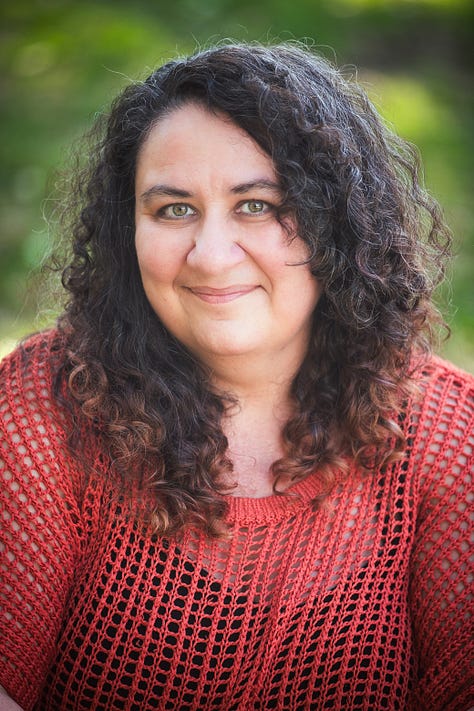Rescheduling, Reworking, and Reconnecting: A Mid-Semester Shift in a Communication-Intensive Performance Course
What happens when a performance class pauses to breathe—and rethinks the plan
This is the fourth installment in our C-I in Action series where we follow Dr. Naomi Bennett through her process of teaching a communication-intensive course. This week, we look at what happens when you need to change your plans to facilitate meaningful student engagement and meet the learning goals of the course.
By weeks 6 and 7, something had shifted in Dr. Naomi Bennett’s Performance Composition course. Students were no longer just turning in assignments—they were actively shaping their work, reflecting on their choices, and supporting each other’s growth.
The course, certified as Communication-Intensive (C-I), had always centered revision, reflection, and audience awareness. But during this stretch of the semester, those values came to life through a redesigned structure that deepened students’ engagement with communication as both a skill set and a mindset.
Reworking the Schedule—and the Mindset
The original course design included three major performance projects. This is a common approach in performance studies at LSU, but by Week 5, Naomi recognized that the schedule was packed too tightly for students to absorb feedback, practice skills, and revise meaningfully.
So she made a bold move: she cut the third project and reorganized the remaining weeks to include more time for workshopping and reflection between drafts.
“After giving myself permission to revise the schedule and seeing the positive effect it had on the students and class culture, I felt really good.”
This shift aligned directly with Communication-Intensive values: emphasizing process over product and treating communication as recursive and contextual. The new schedule also gave students time to ponder the public nature of performance. With class time available in the final week, students requested lights and music for their last pieces—and Naomi supported the idea, using it to reinforce audience awareness and presentation skills.
Revisiting Movement and Physical Presence
In Week 6, students re-engaged with physical movement. Physical movement is a central part of how Naomi teaches the course, but the class hadn’t explored it in depth since early in the semester. After revising their poetic language assignments, the students participated in workshops on staging, posture, pacing, and the use of “negative space.” Skills in using their bodies to communicate ideas were taught through some class activities.
In one exercise, students created sculptural shapes using space between limbs and bodies. They moved between these shapes in groups, then added lines from their writing to discover unexpected connections between language and movement.
As young children, play is the first way that we learn about the world, ourselves, and interactions with others. As adults, we often forget this and strive for perfection over the joy and rich discoveries that can come out of play and experimentation.
This focus on embodied, multimodal communication helped students build awareness of how physical expression communicates meaning, and how subtle choices can carry rhetorical weight.
Letting Students Lead the Communication
By Week 7, students began presenting what would now serve as their final performance pieces. Thanks to the restructured schedule, there was time after each class for informal group workshops.
Students who had already performed acted as mentors, helping peers rehearse, offering feedback, and sharing strategies for memorization and movement.
“The most powerful teaching moments came from the students themselves,” said Naomi. “They were asking better questions, sharing ideas, and really taking ownership of the communication process.”
These peer-led sessions exemplified collaborative learning and reflective practice—two foundational aspects of C-I pedagogy. Naomi observed not just growing confidence in performance, but in students’ ability to articulate their decisions, reflect on their growth, and support each other’s learning.
"By mid-semester, students weren't just going through the motions of performing, they were beginning to explore the possibilities of performance as a method of inquiry and communication."
Do you have questions about the process of teaching this course as Communication-Intensive? Drop a comment below for Naomi and the CxC Team!
A C-I Course Rooted in Flexibility and Trust
These mid-semester weeks offered a powerful reminder: C-I teaching isn’t only about scaffolding assignments. It’s also about creating a classroom culture where feedback is meaningful, creativity is supported, and revision is part of the rhythm.
Through schedule revisions, physical exploration, structured feedback, and student-led mentoring, Naomi’s class transformed into a space where communication was intentional, experimental, and human.
C-I Teaching Highlights from Weeks 6–7
Process-based revision: Students received direct instruction between drafts, emphasizing revision as a key part of communication.
Audience awareness: Public performance expectations encouraged students to think rhetorically about staging and delivery.
Multimodal communication: Movement and spatial work helped students express ideas beyond language.
Collaborative learning: Peer mentoring after performances gave students real-time opportunities to teach and learn from each other.
Reflection and feedback: Added workshop days gave space to ask questions, revise choices, and articulate intentions.



Read more from this C-I in Action series
Part 1: Meet Communication Studies Professor Dr. Naomi Bennett and learn a little about her Performance Composition C-I course
Part 2: Take a look at some of the initial planning and the first few weeks of the course
Part 3: Exploring the importance of feedback and a willingness to shift plans to ensure successful course outcomes
Part 4: Recognizing a need to change course to facilitate meaningful student engagement, and seeing the outcome of that revision to the plan
Part 5: Explore how scaffolding, trust, and feedback shaped the second half of the semester
Part 6: Students begin building confidence, critique, and connection by putting what they’ve learned into practice
Part 7: Students close the semester balancing challenge and care in the second round of personal narratives


